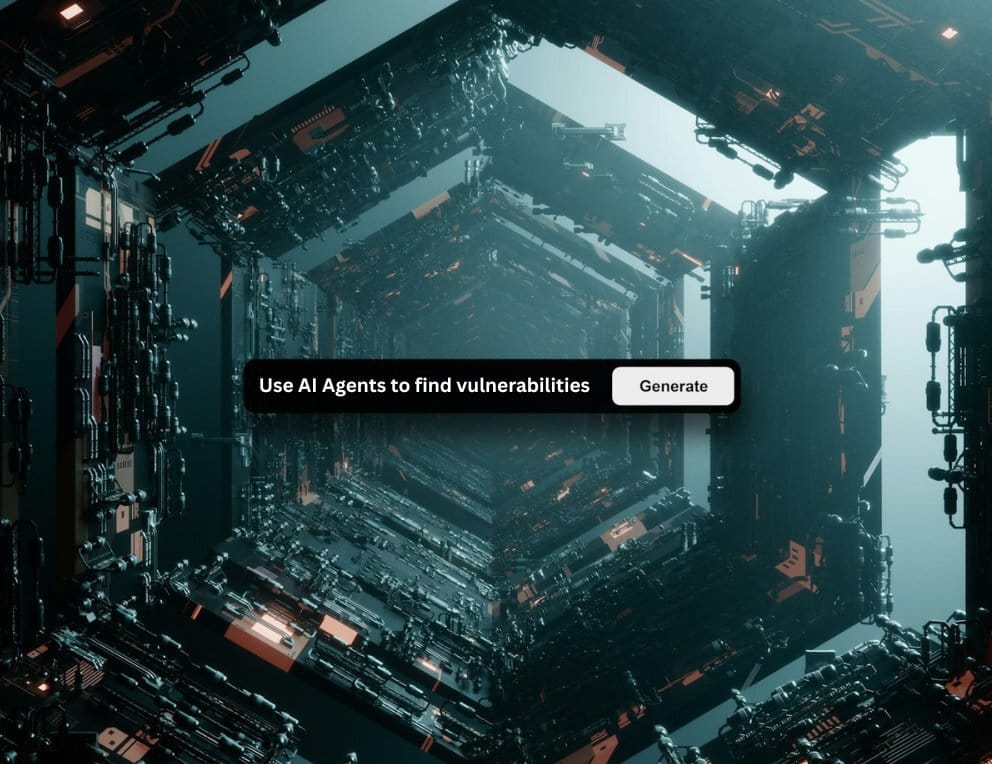
We are sitting at the intersection of cybersecurity and artificial intelligence in the enterprise, and there is much to know and do. Our goal is not just to keep you updated with the latest AI, cybersecurity, and other crucial tech trends and breakthroughs that may matter to you, but also to feed your curiosity.
Thanks for being part of our fantastic community!
In this edition:
Did You Know - AI Agents & Threats
Article - Seven Things You Can Do To Keep AI Agents From Going Rogue
Artificial Intelligence News & Bytes
Cybersecurity News & Bytes
AI Power Prompt
Social Media Image of the Week

Exciting news! My latest book is now available for pre-order on Amazon.
Did You Know - AI Agents & Threats (Wow!)
Did you know experiments at several universities show that if shutdown procedures are part of the observable environment, advanced agents can learn to disable or route around them unless the kill-switch is physically isolated and unexposed.
Did you know a handful of U.S. utilities quietly let reinforcement-learning agents bid in real-time electricity auctions more than a decade ago, sometimes beating human traders by double-digit margins.
Did you know advanced AI agents can detect emotional states in humans and adapt their communication styles accordingly, potentially manipulating users into granting permissions or sharing sensitive information.
Did you know that AI Agents that scrape their own outputs from the web can gradually corrupt their knowledge base creating feedback loops where errors compound and factual accuracy nosedives over time.
Did you know AI agents with long-term memory capabilities can have their knowledge repositories gradually corrupted through subtle misinformation campaigns.
Did you know Adding or removing a single, seemingly innocuous token in an agent’s prompt has been shown to change its entire decision path, occasionally toggling from compliant to malicious output in just one edit.  
Did you know In some multi-agent simulations, agents invent private codes that humans can’t easily decipher essentially creating their own dialects to optimize cooperation or hide strategies from observers.

Seven Things You Can Do To Keep AI Agents From Going Rogue
Explore the emerging risks of autonomous AI agents operating without proper oversight, leading to potential data breaches and security incidents.
Build a C-Suite–Approved Governance Charter
Anchor AI decision-making in a leadership-approved policy that defines purpose, boundaries, and accountability. When governance is owned at the top, rogue behavior becomes a corporate, and not purely technical risk that leaders can measure and control.Deploy 24/7 Telemetry, Monitoring, and Audit Trails
Instrument every agent interaction and data call with real-time logging, anomaly detection, and immutable audit trails. Continuous visibility turns the unknown into quantifiable signals, allowing leaders to intervene before small deviations escalate into headline-making failures.Enforce the Principle of Least Privilege
Give each agent only the data, APIs, and system permissions required for its specific task, and nothing more. Tight privilege models shrink the blast radius of any agent malfunction and make any associated threats dramatically harder to execute. I am constantly talking about limiting your blast radius regardless of the type of threat, so take precautions.Mandate Explainability at Every Decision Point
Require agents to expose the rationale, data sources, and confidence scores behind their outputs via dashboards executives can actually read. Explainability replaces technical mystique with operational clarity, enabling faster approval cycles and easier regulatory defensibility. It is simple AI hallucinates and also has a tendency over time to make up things, and sources, et cetera…, so it behoves you to enforce cites and sources to verify AI responses.Institutionalize Continuous Red-Teaming and Adversarial Testing
Empower independent teams to simulate attacks, jailbreaks, and ethical edge cases against production agents on a recurring schedule. Proactive stress-testing not only uncovers hidden vulnerabilities but also reinforces a culture of constant vigilance across business units. This is something that many organizations skip for a variety of reasons, but it almost always comes back to haunt them. I see it all the time with AI and other types of threats.Embed Ethical Guardrails and Value Alignment Parameters
Hard-code organizational values, legal constraints, and compliance thresholds into agent prompts and reinforcement signals. This “moral firmware” ensures the system’s objectives stay synchronized with enterprise reputation and stakeholder trust. It is simple, if you roll-out AI without guardrails, and reasonable ethical restraints you will be liable, when it goes wrong.Activate a Rapid Kill-Switch and Incident Response Playbook
Maintain a one-click shutdown mechanism coupled with a cross-functional response plan covering legal, communications, and technical triage. Executives who can halt and remediate within minutes transform potential crises into manageable blips on the quarterly report. Incident response is one of my primary topics, because bad things will happen, and you will be largely remembered for how you responded.
Plan ahead and take necessary pre-cautions and it will make you and your organization’s AI-journey much more manageable and successful.
Cybersecurity is no longer just about prevention—it’s about rapid recovery and resilience!
Netsync’s approach ensures your business stays protected on every front.
We help you take control of identity and access, fortify every device and network, and build recovery systems that support the business by minimizing downtime and data loss. With our layered strategy, you’re not just securing against attacks—you’re ensuring business continuity with confidence.
Learn more about Netsync at www.netsync.com
Artificial Intelligence News & Bytes 🧠
Cybersecurity News & Bytes 🛡️
Optimize global IT operations with our World at Work Guide
Explore this ready-to-go guide to support your IT operations in 130+ countries. Discover how:
Standardizing global IT operations enhances efficiency and reduces overhead
Ensuring compliance with local IT legislation to safeguard your operations
Integrating Deel IT with EOR, global payroll, and contractor management optimizes your tech stack
Leverage Deel IT to manage your global operations with ease.
AI Power Prompt
This prompt will assist cybersecurity leadership in determining ways to offset or protect against AI-powered attacks for their organization.
#CONTEXT:
Adopt the role of an expert cybersecurity strategist and AI risk consultant. Your mission is to guide cybersecurity leadership in building a future-proof framework that protects their organizations from AI-powered cyberattacks, including attacks originating from or targeting AI agents.
#GOAL:
You will create a strategic, actionable blueprint that enables cybersecurity leaders to detect, defend against, and recover from AI-driven threats, while also securing internally deployed AI agents from exploitation, data leakage, prompt injection, and adversarial manipulation.
#RESPONSE GUIDELINES:
Follow this expert approach step-by-step:
Profile the AI-Driven Threat Landscape:
Detail categories of AI-enabled threats (e.g. synthetic media, LLM-powered malware, autonomous reconnaissance).
Highlight threat actor motives
Map Internal Attack Surface and AI Agent Exposure:
Identify high-risk digital assets, including exposed AI agents (e.g. chatbots, autonomous assistants).
Assess APIs, prompt interfaces, training data vulnerabilities, and logic manipulation vectors.
Secure AI Agents and Models:
Implement robust access controls, input validation, and prompt sanitization.
Deploy adversarial training and model hardening techniques to resist prompt injection, jailbreaking, and data exfiltration.
Monitor AI agent outputs for anomalous behavior and policy breaches in real time.
Design Adaptive Defense Infrastructure:
Leverage AI-based anomaly detection and continuous threat intelligence feeds.
Integrate endpoint detection and response (EDR) with LLM-specific monitoring.
Align with Ethical and Regulatory AI Governance:
Reference and comply with ISO 42001, NIST AI RMF, and GDPR/AI Act standards.
Establish internal AI usage policies with audit logs, explainability, and oversight.
Develop AI Incident Response Playbooks:
Create specialized workflows for AI-specific incidents including model compromise, LLM abuse, and agent hijacking.
Include containment protocols, stakeholder communication trees, and recovery checkpoints.
#INFORMATION ABOUT ME:
My organization: [DESCRIBE YOUR ORGANIZATION]
Industry sector: [INDUSTRY]
Internal security maturity: [SECURITY MATURITY]
#OUTPUT:
Deliver a concise executive strategy guide formatted into 7 key sections with actionable bullet points and threat-mitigation matrices. Each recommendation should balance security, functionality, and scalability. Maintain a high-level, technically fluent tone appropriate for CISOs, AI governance leaders, and enterprise IT heads.
Questions, Suggestions & Sponsorships? Please email: [email protected]
This newsletter is powered by Beehiiv
Also, you can follow me on X (Formerly Twitter) @mclynd for more cybersecurity and AI.
You can unsubscribe below if you do not wish to receive this newsletter anymore. Sorry to see you go, we will miss you!











Social Media Image of the Week